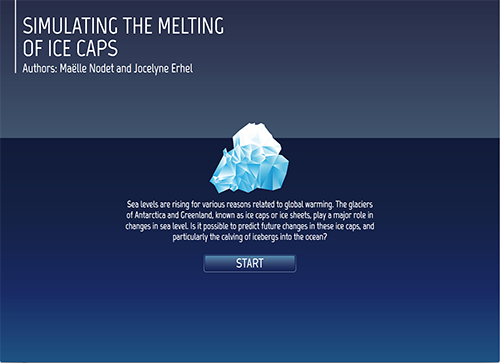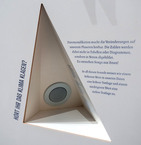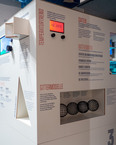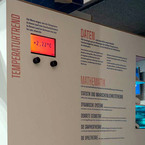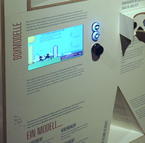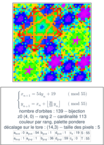Simulating the Melting of Ice Caps
program
Licenses
Source code
Data
Emeği Geçenler
Katkıda Bulunanlar
Destekleyenler
Sea levels are rising for various reasons related to global warming. The glaciers of Antarctica and Greenland, known as ice caps or ice sheets, play a major role in sea level rise. Is it possible to predict future changes in these ice caps, and particularly the calving of icebergs into the ocean?
The module answers to this question by showing numerical simulations of ice sheet dynamics.
The mathematical model is derived from the physical processes at work; the numerical model is built by discretizing space and time and by solving iteratively nonlinear equations. Then simulations can predict the dynamics during hundreds of years. Results of simulations are shown with images and a movie.
Mathematics:
Since the mathematical model is rather complex with a system of nonlinear partial differential equations, it is quite simplified to provide the main ideas. Physical laws and equations are illustrated by graphics and just a few mathematical expressions. Some essential notions are introduced.
The module is somehow complementary with the program “The future of glaciers”
by G. Jouvet and al. since it is quite different. First, it deals with ice caps and not with alpine glaciers. Second, mathematics is introduced in a different way. Here, the program presents the successive tools from models to algorithms and programs. We explain how equations are written inside the ice sheet, and on the different boundaries. We relate the physical process to the law of conservation and to the partial differential equation. On the other hand, the movie included in our module presents only one scenario.
Interactive module:
The module is presented like an interactive book, with 12 pages, organized as follows:
Page 1: introduction.
Page 2: sea level rise and melting of ice sheet; video showing calving of iceberg in Greenland.
Page 3: summary of the interdisciplinary research work; pictures of a glacier.
Page 4: physical processes at work; the visitor can choose an area (inside, at the base, on the surface, at sea level) and get explanations about the physics.
Page 5: mathematical model; the same areas can be chosen to get explanations about the variables and equations.
Page 6: numerical model, time discretization; a diagram and a short text describe the different time steps.
Page 7: numerical model, space discretization; an image of a 3D mesh and text explain the transformation from continuous to discrete equations.
Page 8: numerical model, nonlinear equations; the notions of iterative algorithms and stopping criterion are introduced.
Page 9: numerical simulations; results using the software Elmer/Ice are shown in a movie.
Page 10: Quiz; a question about the speed-accuracy tradeoff.
Page 11: Bibliography.
Page 12: Credits.
Technical details:
The package contains a main file written in html, with styles defined in a css file. Pictures are png files, while movies are integrated from YouTube. The webpage is not designed with RWD yet but we plan to do it. As a consequence, we recommend opening the file index. html. An experienced user might decide to directly open the file IceCaps.html and resize the Internet browser to fit the page size (1000 x 780 pixels). The module was tested on personal computers, with various operating systems (Windows, MacOS) and Internet browsers (Firefox, Chrome, Safari).
The package contains English and French versions.
Pleas note: Updated module and “Launch” button
This module has been updated to run at interactive exhibitions (on a FULL HD touchscreen). You can find the updated module by clicking on the Launch button. This version has been optimized for FULL HD resolution and might not run smoothly on any other resolution. Please contact info@imaginary.org if you plan to show this module in an exhibition.

